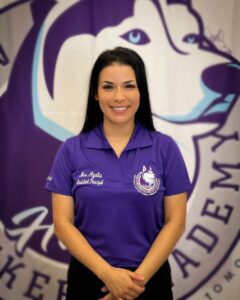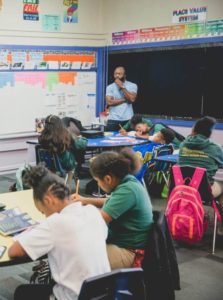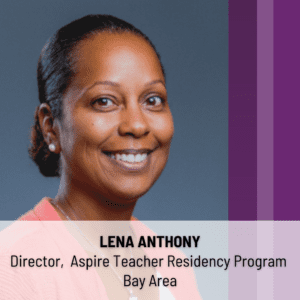Educator’s view: 4 ways to close the growing gap between Hispanic student enrollment and Hispanic school leaders
Original LA School Report article found here.
COMMENTARY
By Jocelyn Ayala | Aspire Inskeep Academy Principal
October 23, 2023

It was not until I began attending CSUDH that I was called to find a career where I could have a positive impact on young people from my community. See, I grew up in South Gate California, not very far from where my school site is located. My school is located in South Central Los Angeles, a beautiful, vibrant, mainly Latino neighborhood that continues to struggle with challenges of poverty, trauma and violence.
Ten years ago, I found an advertisement for an Instructional Aide at Aspire Public Schools. I soon began my journey at Aspire Inskeep Academy, a kindergarten through eighth-grade public school in my community, and I jumped at the opportunity. To say that responding to that job post was one of the best things I ever did would be an understatement. It set me on a trajectory that would change my life, and through my work, have a positive impact on hundreds of students and families from the community that raised me.
During my tenure at Inskeep, my school leader recognized my potential and supported me as I earned my Master’s Degree in School Leadership. Ten years later, I am proud to be a first-year principal at the very school that helped me realize dreams I didn’t even know I had. I’m deeply grateful for the opportunities granted to me, but as a Latina, I still worry that our students do not see enough positive Latino role models who can help them chart a path to a successful future.
To recruit and retain leaders of color who reflect their school community, schools must do more than just name this as a priority. They must put real resources and action behind this intention. Reflecting on my own journey, I’ve identified four lessons that will help develop educational leaders of color:
Recruit from within your community: Coming to Inskeep felt like home for me. I instantly recognized the cultural traditions and values observed by many of my students, families, and teammates. Finding connection with my students and families sustains me to this day, but it’s more than just energizing for me. It creates a sense of belonging that has a positive impact on student performance, attendance, and engagement. I’ve made it a priority to find school staff – from custodial staff to instructional aids to front office administrators – that reflect the community we serve. Parents and guardians are a great place to start. You never know who might have the potential to become the next school leader.
Create a culture of mentorship: I was fortunate that my school leader recognized my potential early on and gave me opportunities to advance my education and grow my skills. I hope to pay that mentorship forward now that I’m a school leader. But mentorship doesn’t only have to come from the top. At Inskeep, I have cultivated mentors at all levels of our school – from the front office teammates to our most veteran teachers. The purpose of creating mentorship opportunities is twofold: it benefits the mentee by having someone invested in their career and personal development; and the mentor deepens their connection to the school community. When possible, we pair mentees with someone who shares a similar background and potential career trajectory as them.
Model an environment where growth is prioritized: At any given time at Inskeep, you will often find multiple adults in a classroom. It could be a master teacher mentoring teacher residents and student teachers. Or that same master teacher might spend a day shadowing an assistant principal to learn more about administrative leadership. Seeing these opportunities reminds our team that we want you to stay and grow at our school, and that growth doesn’t only mean you develop into a school administrator. There are innumerable ways to professionally grow and deepen your impact on our school community.
Clear barriers to professional growth: One of the biggest hurdles to advancement, especially for adults in my community, is financial. Obtaining needed degrees, credentials, or certifications can be cost prohibitive for budding leaders who may not have the resources to afford them, or are unable to give up income so they can attend classes. Identifying partners that understand these challenges and design programs around them will ensure more people can deepen their impact on our school without sacrificing financially. At Aspire, we partner with alternative certification programs – including the Alder Graduate School of Education andCal State Dominguez Hills, among others – to develop teachers and leaders by building their skills while continuing to earn income to support their family.
Leadership means more than just running a successful school; it is about creating a culture of growth and development — a place where people can discover their potential and have the space to nurture it. I am proud of my ten years of growth and development at Inskeep; now it’s my turn to continue that legacy.
Jocelyn Ayala is the principal of Aspire Inskeep Academy in Los Angeles. Over the past decade, she has also served as assistant principal, school administrator, master teacher and instructional aide. A native of El Salvador, Jocelyn Ayala migrated to Los Angeles when she was six years old. She went on to receive her B.A. and master’s in education from Cal State Dominguez Hills.



